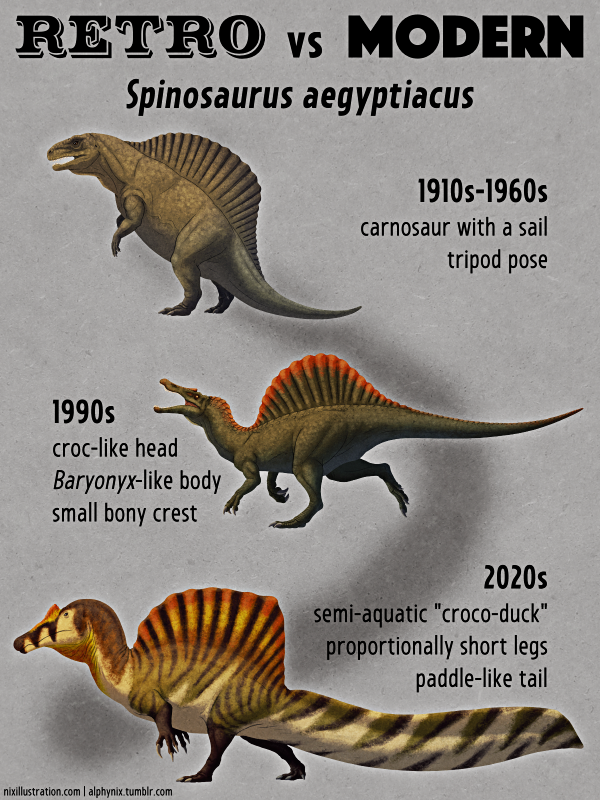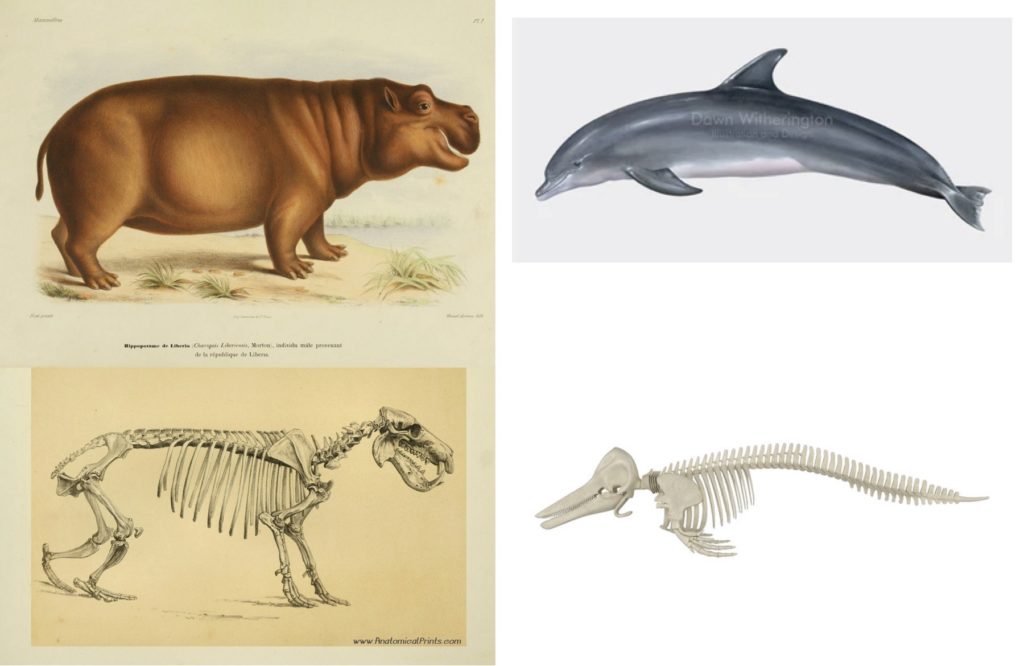Was Spinosaurus a Swimmer?

Spinosaurus has a long history of confusion and reanalysis behind it. Part of the reason that paleontologists can’t seem to make up their minds is because the first specimen was discovered in 1912 and promptly destroyed during World War II. New specimens were not discovered until the 1990s and 2000s.
What we knew about Spinosaurus from the 1912 specimens was that it was a large, carnivorous theropod with a sail on its back. The specimens uncovered in the 1990s were bits of the skull. It wasn’t until 2014 when more of the body was recovered in North Africa and we started to understand more about its proportions.

Even though we had first imagined a dinosaur similar in proportions to other large theropods (having long, muscular legs and more gracile arms), the new specimen showed a dinosaur with relatively equal length arms and legs, and a large sail on its back made out of the spines of the vertebrae.
But what did this mean for how Spinosaurus lived? Was it a terrestrial predator like T. rex? Did it sit idly by the water, waiting for unsuspecting aquatic prey? Or was it an active underwater predator?
A new [study] finally answers this question. Fully aquatic animals have bodies that usually have fins, noses that open at the top of their head instead of the front, and arms, legs, and tails that are more suited for swimming. But some animals that live mostly in the water do not show these obvious adaptations. Animals like hippos look more like other terrestrial animals. That is, until you look at their bones. Aquatic animals increase the amount of bone they develop in their limbs and ribs so that they have easier time sinking while swimming. It gives them more control over their position in the water.

With this information in mind, the authors measured bone density in the ribs and femur of hundreds of amniotes (animals that lay a shelled egg or give live birth). What they found was that Spinosaurus has bone density similar to other aquatic animals, meaning it likely spent a lot of time pursuing prey under water. Its close relatives, Baryonyx and Suchomimus, both of which are smaller than Spinosaurus and do not have a sail, showed an even more interesting result. Even though both Baryonyx and Suchomimus have similar looking bodies, Baryonyx’s bone density showed that it was likely an aquatic predator, whereas Suchomimus was terrestrial!

The authors tested many more species of dinosaurs in their sample, and the spinosaurids seem to be the only aquatic non-avian dinosaurs. Many other amniotes return to the water, but most dinosaurs preferred to stay on land. Why this is, we are not yet sure. However, this study shows why it is so important to continue to look for fossils and to run large-scale analysis comparing animals across different groups and lifestyles.